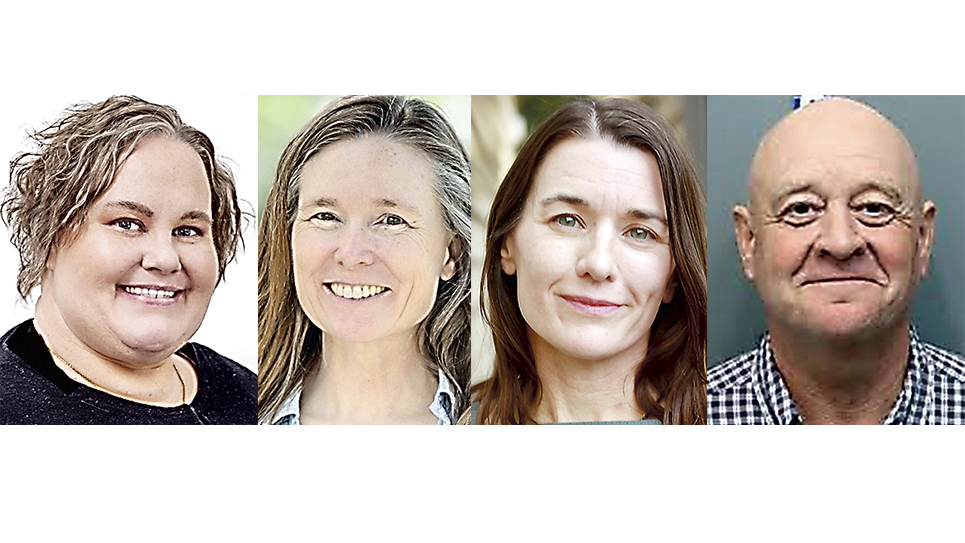By the time you read this essay I hope many of you have in your possession a signed copy of my latest book, “Well…What Did the Doctor Say?” All my readers were invited to The Party hosted by The Focus, but I know life is complicated and some were out of town or had other commitments. Not to worry; the book is available at Union Avenue Books in downtown Knoxville across from the Pembroke. It is also available at Hastings Books in Maryville. And if you’re an online shopper, you can get my book at Amazon.com or BarnesandNoble.com, in paperback or an eBook, if you prefer.
I’ve been thinking about cancer lately because a dear friend of mine was recently diagnosed with her fourth lung cancer. She’s become a “poster child” for the MD Anderson Hospital in Houston because she’s conquered the beast three times before and we have hope she will again, thanks to modern medicine, her indefatigable spirit and God’s plan. This survivor is an inspiration to her friends, and also to the cancer specialists who care for her. I guess her therapy flows both ways.
If you look at the statistics most people who survive the perceived indestructibility of youth, die of cardiovascular diseases like stroke and heart attacks, or they die of cancer. Living to middle age means surviving the naiveté of youth such as jumping off the bluffs of rock quarries. I’ll admit I once thought as a child, but I gave up childish ways when I became a man, to paraphrase Paul. We’ve all heard the “joke,” “What’s the last two words of a ‘redneck’?” The answer, “War’ch this.” Embarrassingly, I’ve been there, done that, but fortunately I didn’t buy the tee-shirt or the farm during my misadventures as a young fool.
I’ve written often about cardiovascular disease which is the principle cause of death in America, accounting for 29% according to Medical News Today. However, cancer ranks a close second causing 23% of all deaths annually. We are making progress in the prevention and treatment of these scourges. There are numerous medications and procedures to treat cardiovascular diseases like cholesterol lowering statins and stents to open blocked arteries. And there are many cancer therapies as well, including surgery to remove cancerous tissue and radiation to destroy malignancies.
Cancer is likewise often treated with medications or chemicals, hence the term chemotherapy. These drugs are administered to preferentially destroy the uncontrolled and rapidly growing cancer cells. Unfortunately, these cytotoxic drugs (cell damaging) also injure healthy non-cancerous cells, and produce side effects like hair loss, diarrhea and bone marrow toxicity.
Recently, I heard a cancer expert say that these are exciting times for doctors who treat cancer and their patients. In particular, he was referring to new agents that are now available to treat melanoma, a deadly form of skin cancer. In the past all that was available for this increasingly common skin cancer was surgery. While surgical removal of melanoma remains the principle therapy, doctors now have targeted therapy based on manipulations of the body’s own immune system.
Other targeted therapies using “designer drugs” are Gleevic to treat leukemia and Tarceva to treat lung cancer. These drugs inhibit a critical enzyme system called tyrosine kinase and stop cancer growth. Years ago I diagnosed chronic myelogenous leukemia in a young University of Tennessee student. I met with him and his fiancée to discuss his diagnosis and referral to a cancer specialist. This was a time when bone marrow transplants were still experimental and before there were curative treatments. I painfully recall his incredulous question: “Doc, am I going to die?” I told him, yes, he would within three years. We sobbed on each other’s shoulder, and he died almost three years later. I often think of Burton and wish I could have given him modern-day Gleevic. This kinase inhibitor stops leukemia and now preserves the life of one of my family members.
We take for granted a functioning body and immune system, at least until they become dysfunctional with disease. As a scientist I observe the world as balanced forces. My immune system functions to recognize and destroy invading germs. It also locates malignant cells as they continually form and eliminates them. A weakened immune system can lead to infection and cancer. Conversely, an overactive and uncontrolled immune system may cause systemic lupus.
During my forty year career the understanding of the immune system has paralleled similar breakthroughs in genetics. Just as we now look beyond the simplistic view of the atom learned in high school, we now look beyond white blood cells to their subtypes, and to genetically induced protein expressions within and on healthy as well as cancerous cells.
Not many years ago the discovery of oncogenes (genes that cause cancer) led to speculation that there were only a limited number of these or their activators (proto-oncogenes). Subsequently, it was learned there are also one hundred and forty tumor-suppressor genes which can also drive cancer when genetically altered. Furthermore, these “driver genes” operate in twelve different pathways. “It’s complicated,” Folks. Fortunately, science has learned to target some pathways with Gleevic and Tarceva.
It is thought that radiation exposure, ultraviolet light and tobacco produce mutations in DNA which accumulate over a lifetime. “Tumors contain hundreds to thousands of mutations” and “melanomas and lung cancers contain 200 mutations per tumor” (NEJM 371:23).
It is thought that malignancies activate the immune system through T cells (a white cell subtype). Interestingly, the very activation of tumor destroying T cells also activates the regulating side of the immune system – CTLA-4 protein – which naturally opposes “activated” T cells. However, if you have cancer, you’d like the immune system and T cells to remain actively attacking cancer cells. Science has now given us a new medication called Yervoy which is being used in melanoma treatment to “put a brake” on the counter regulatory CTLA-4 system and thereby augment T cell surveillance.
A sign hangs at MD Anderson which says, “From the moment of your diagnosis you become a survivor.” The diagnosis so many of us fear may be coming under control utilizing our own immune systems. It is a brave new world for cancer patients and a time of renewed hope.






